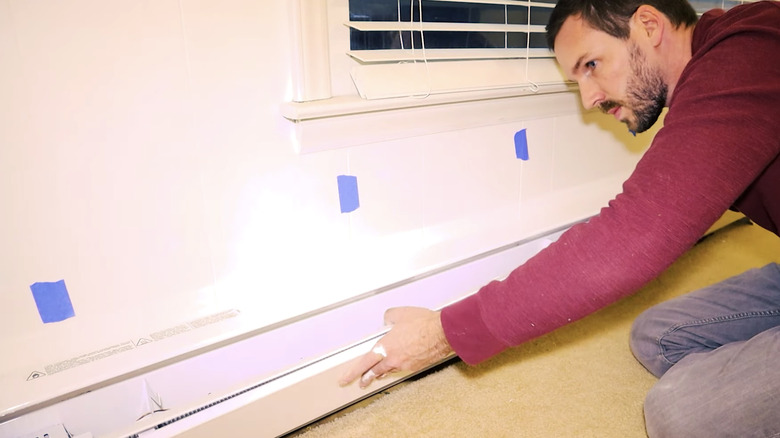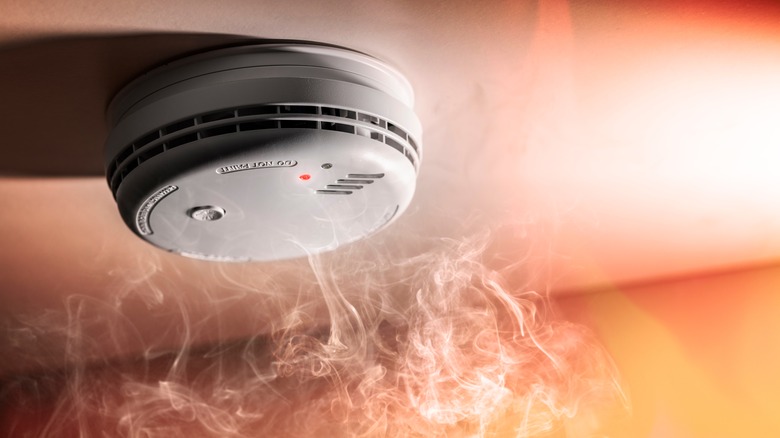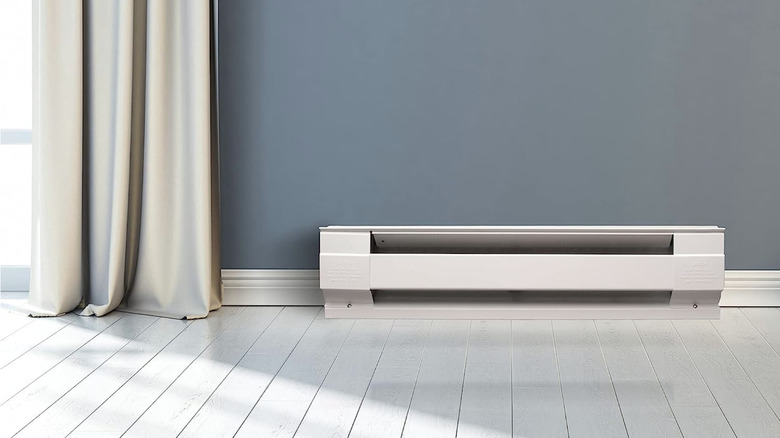What You Should Consider Before Installing Baseboard Heaters
We may receive a commission on purchases made from links.
If you're looking for a way to expand and increase the flow of heat in your house, baseboard heating is just one way to do so. Baseboard heaters are long and thin bars with visible vents that are usually attached to one of the baseboards inside a room and are responsible for releasing hot air into the space. Unlike forced-air heating systems, a popular, modern alternative to baseboard heating, baseboard heaters control the heat flow within one room or section of the home, by absorbing the cool air inside a space and warming it using a metal heating element and electricity or a liquid, like water or oil. Before you decide to install baseboard heaters inside your home, note that the devices serve as a potential fire hazard and can end up being inconvenient and expensive to manage if you own a large house.
Formerly a common sight inside homes in the mid-to late-20th century, homeowners began swapping their baseboard heaters for centralized heating systems out of convenience, and as a way to save money by practicing energy conservation. Though, baseboard heating hasn't been eliminated entirely. The system remains a popular trend in Northeastern homes and houses built before the 1960s. If you're looking for a method that gets the job done and is easy to install, baseboard heating might be an effective choice for you and your family. Here's what you need to know about baseboard heating, particularly the downsides to selecting this option to heat your home.
Serves as a potential fire hazard
Baseboard heating might seem like the ideal solution to improving heat flow within your home, since, unlike forced-air systems, the units operate quietly and don't call for the installation of ductwork and other complex elements. But the system has its share of qualities that make it unsafe in certain situations. For instance, similar to space heaters and radiators, baseboard heaters are extremely flammable and can easily start a fire if furniture, curtains, or other items around the house are placed too close to their vents. Baseboard heaters can prove to be especially hazardous for households with small children, who may unknowingly place a toy, blanket, or other objects against the heater and spark a flame.
This, along with the fact that the units are bulky and stick out from the wall, may prevent you from arranging a room in the layout or style you'd prefer. At a minimum, placing items in front of your baseboard heater blocks the intake of cold air and the outflow of heat, defeating the purpose of installing a baseboard heater in the first place. Ensure at least six inches of space exists between your heater's vents and the nearest object. Other actions you can take to eliminate the chance of starting a fire are hiring a reliable contractor to install the unit and vacuuming regularly to prevent dust and other particles from settling within.
Expensive and inconvenient
Baseboard heaters use more energy and require manual adjustments in order to operate at their best. In terms of cost, baseboard heating is normally easier on the wallet than centralized heating options, with contractors charging anywhere from $300 to $1,100 to install a single unit, while charging up to thousands of dollars to install a forced-air heating system from scratch. However, costs add up when a homeowner relies solely on the system to heat their entire house.
Homeowners relying solely on baseboard heating can expect to spend around $500-$1,500 more on energy costs each year in comparison to homeowners with other, more efficient heating systems. A single unit doesn't release heat at the speed or intensity of a duct connected to a central HVAC system, so baseboard heating is best suited for small homes or for individual rooms needing an extra resource to heat them up to par with the rest of the house.
When installing a baseboard heater, a thermostat is usually installed in the same room to control the unit. Since the individual heaters aren't connected to a single source, each heater must be adjusted separately in order to maintain a consistent temperature throughout the house. If you live in a large home, managing multiple baseboard heaters at once might feel like both a physical and financial burden.


